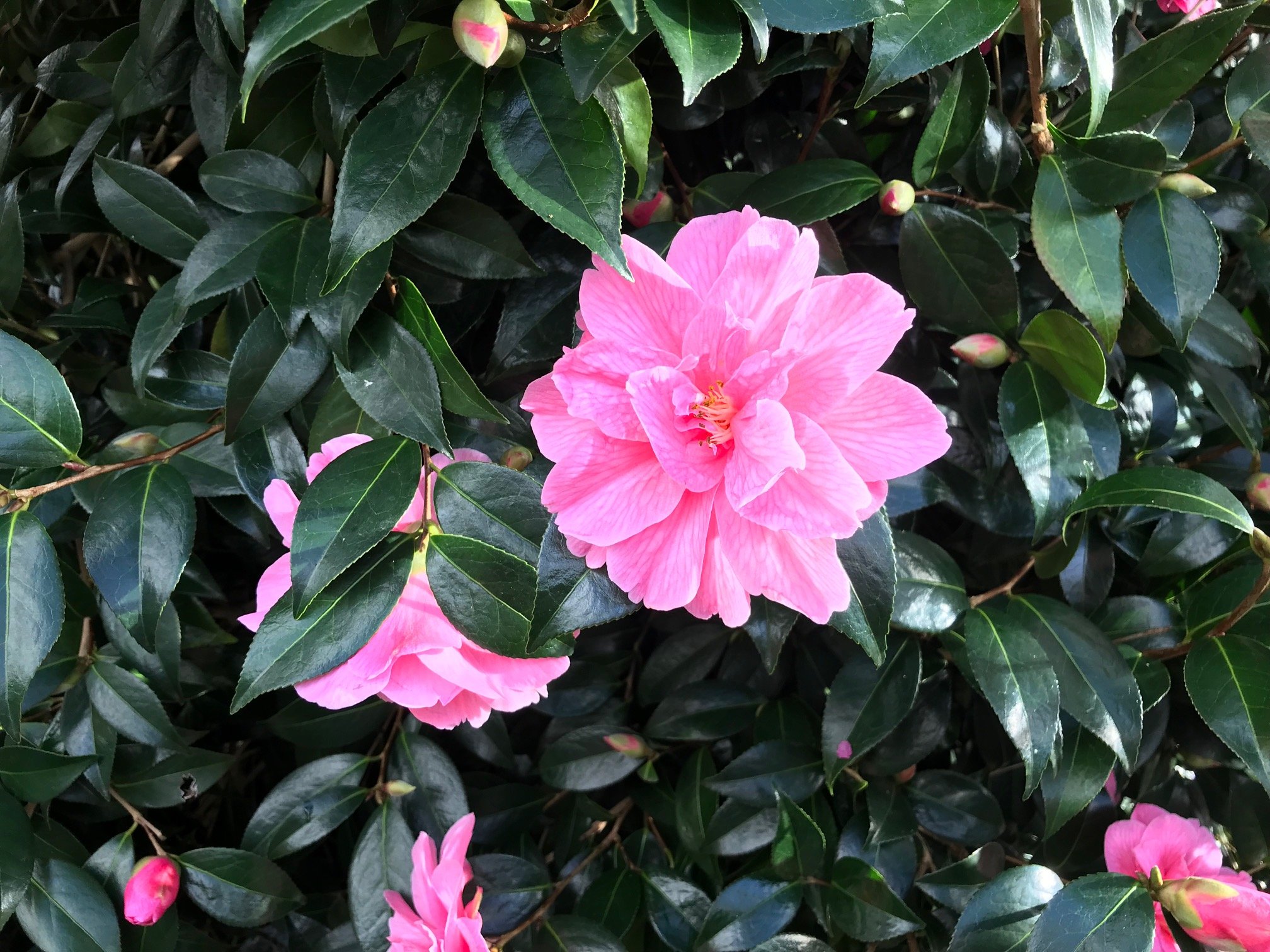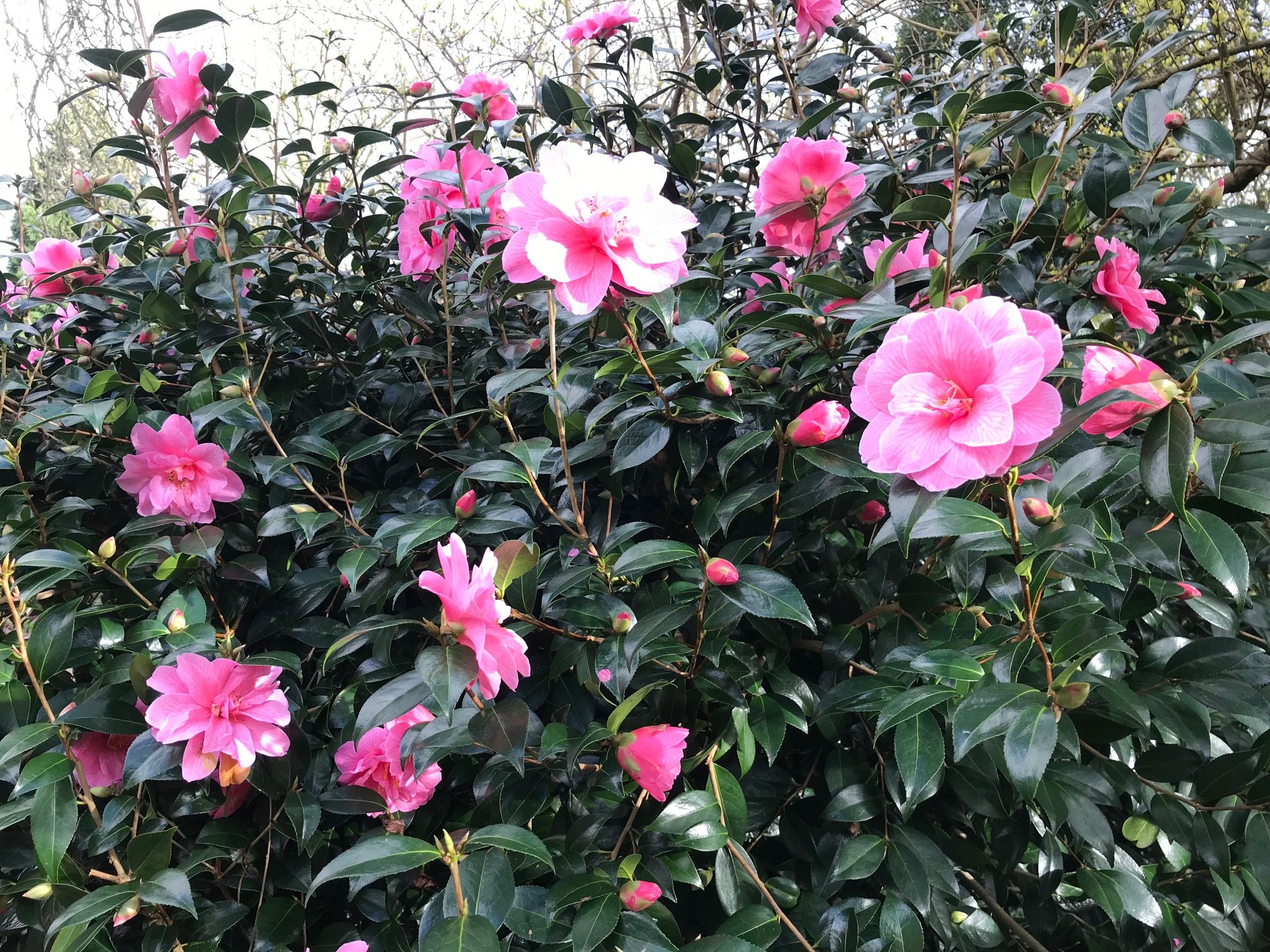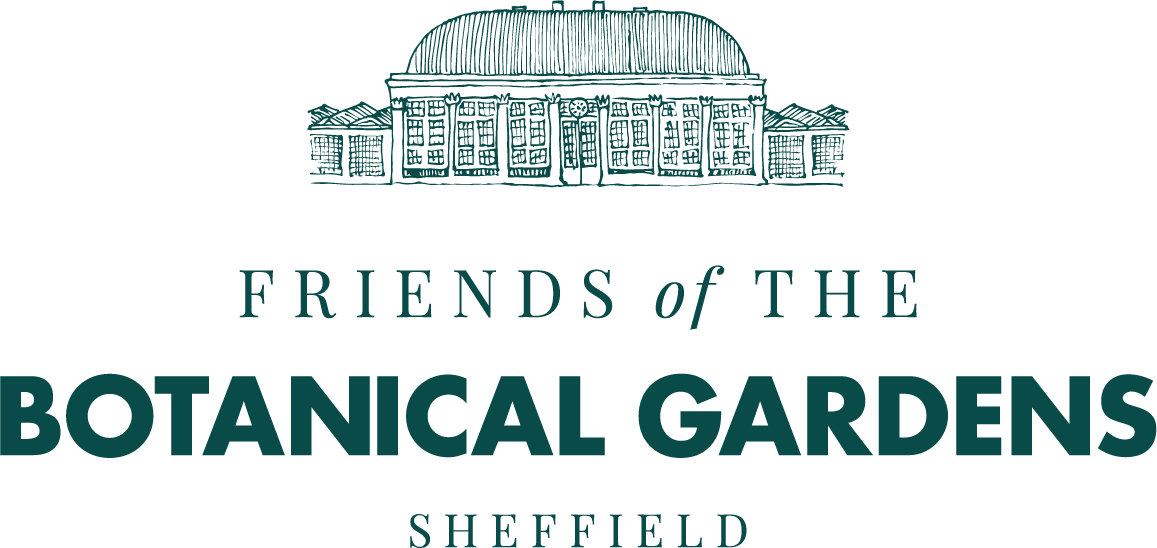Camellia x williamsii ‘Donation’
Walk into the Gardens at the moment and you will be dazzled by the displays of early spring flower throughout – Crocus, daffodils, Daphne, hellebores, early rhododendrons and cherries to name but a few. However as you walk from the Clarkehouse Road entrance to Thompson Road and pass the AGM border, you will see this stunning shrub. You can also see it in the Asia Garden where these pictures were taken, and whilst that specimen is unnamed there will be no mistaking it.
This AGM winning camellia is a renowned and cherished hybrid within the camellia world, and its prominence is owed to a range of striking characteristics. This exquisite variety has an exceptionally long flowering from February to May and showcases large, semi-double saucer shaped flowers in a captivating orchid-pink hue. With a generous width of 12 cms, the petals exhibit a delicate yet intricate pattern of deep veins forming a captivating network that radiates across the blossom. Set among glossy dark green leaves, this creates a contrasting backdrop to the pink blossoms adding texture and depth to landscapes. The famous Hillers Arboretum thought it arguably the most beautiful to be raised in the twentieth century.
It is a strong-growing, large shrub up to 5m in height and of upright growth and will provide nectar and pollen for bees and many other types of pollinating insects. It does best in full or partial shade in an acid/neutral soil sheltered from cold, dry winds and early morning sun, as buds and flowers may be damaged by cold winds and late frosts. Once established, it is a fairly low maintenance shrub with little need for regular pruning. It is hardy to -15C.
Camellia x williamsii ‘Donation’ was raised from a hybrid between C. saluenensis and C. japonica, notably by J. C. Williams at Caerhays and by Col. Stephenson Clarke at Borde Hill who raised ‘Donation’. C.saluenensis was one of George Forrest’s most important introductions and the cross was made around 1925. The hybrid C .x williamsii was described by Lord Aberconway when president of the RHS as one of the best that had ever been introduced to our gardens.



